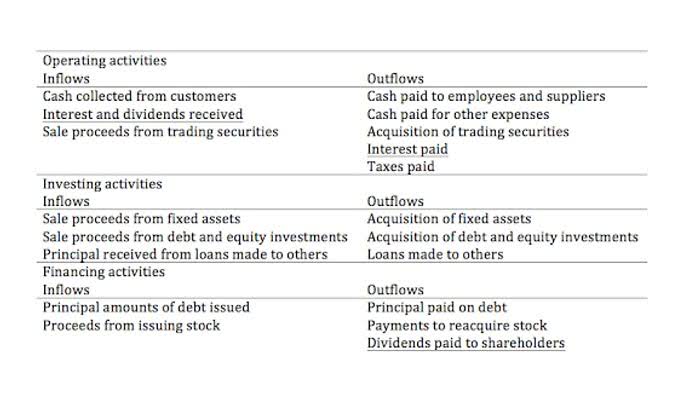
Higher retained earnings may be a sign of a company’s financial strength as it saves up funds to expand—or it could be a missed opportunity for paying dividends. Yes, a company’s financial statements may show negative retained earnings. Changes in the composition of retained earnings reveal important information about a corporation to financial statement users. A separate formal statement—the statement of retained earnings—discloses such changes. Note that a retained earnings appropriation does not reduce either stockholders’ equity or total retained earnings but merely earmarks (restricts) a portion of retained earnings for a specific reason.

Movement on the Retained Earnings Account
The balance of retained earnings fluctuates primarily due to a company’s profitability and its dividend distribution policies. A company’s net income, which is its profit after all expenses, directly increases retained earnings. When a company generates a profit, this addition to its accumulated earnings is recorded as a credit to the retained earnings account. It is permanent because it is not closed at the end of each accounting period. At the start of the new accounting period, the closing balance from the previous accounting period is brought is retained earnings debit or credit forward and becomes the new opening balance on the account. Other than the retained earnings account, closing journal entries do not affect permanent accounts.
Are Retained Earnings a Type of Equity?
He has been the CFO or controller of both small and medium sized companies and has run Cash Flow Management for Small Businesses small businesses of his own. He has been a manager and an auditor with Deloitte, a big 4 accountancy firm, and holds a degree from Loughborough University. Since the purpose of the contra account is to be offset against the balance on another account, it follows that the normal balance on the contra account will be the opposite of the original account. If the company keeps making a profit, the retained earnings will keep increasing. It shows the result of the company from the beginning to the reporting date. Distribution to the owner is one of the ways that company can allocate the retained earnings to the owner.

Retained Earnings Accounting Entry
- Paying off high-interest debt also may be preferred by both management and shareholders, instead of dividend payments.
- The process of using of the income summary account is shown in the diagram below.
- We need to do the closing entries to make them match and zero out the temporary accounts.
- The income summary is a temporary account that is used to close the income and expenses of a company for each accounting period.
- The foundation of accounting lies in the double-entry system, where every financial transaction impacts at least two accounts.
This classification as an equity account is fundamental to understanding its behavior. For example, net income increases total equity, reflected as a credit to the retained earnings account, expanding the capital base. Conversely, actions reducing owner’s equity, such such as paying dividends, decrease the retained earnings balance and are recorded as a debit. At the end of an accounting year, the balances in a corporation’s revenue, gain, expense, and loss accounts are used to compute the year’s net income. Those account balances are then transferred to the Retained Earnings account.
- Beyond the balance sheet, retained earnings is also a central element of the Statement of Retained Earnings, or often, the broader Statement of Changes in Equity.
- This is because they were able to cover their cost of goods sold and other operational expenses, pay dividends and still have some amount leftover that can be referred to as retained earnings.
- At the end of a given reporting period, any net income that is not paid out to shareholders is added to the business’s retained earnings.
- They are generally available for distribution as dividends or reinvestment in the business.
- It couldn’t afford to buy a new one, so Bob just contributed his personal truck to the company.
Where Is Retained Earnings on a Balance Sheet?
A higher ROE often signals efficient management and profitable use of equity capital. The relationship between retained earnings and https://commertech-me.com/what-is-recurring-revenue-models-considerations/ shareholder equity is foundational to understanding a company’s financial structure. Shareholder equity represents the owners’ claim after liabilities are settled, with retained earnings as a significant component.

- In partnerships, retained earnings are distributed among partners according to the partnership agreement.
- Conversely, for liability and equity accounts, a credit increases the balance, and a debit decreases it.
- For example, paying $20,000 in dividends results in a $20,000 debit to retained earnings.
- The balance in a company’s retained earnings account is a running total of its net income, less any net losses, and reduced by dividends paid since the company’s inception.
- Another significant factor that reduces retained earnings is the declaration and payment of dividends to shareholders.
Since retained earnings is an equity account, it follows the same rules. A credit to the retained earnings account increases its balance, reflecting accumulated profits. Revenue accounts, which increase retained earnings, are increased by credits, while expense accounts, which decrease retained earnings, are increased by debits. All financial transactions are recorded using a double-entry system, affecting at least two accounts, with debits always equaling credits. Each type of account has a “normal balance,” which is the side where increases to that account are recorded.
Since equity accounts decrease with a debit, debiting Retained Earnings reflects this reduction. A dividend is a portion of a company’s accumulated earnings distributed to its shareholders. Companies share profits with owners as a return on investment, typically as cash, but sometimes as additional stock or other assets. From the table above it can be seen that assets, expenses, and dividends normally have a debit balance, whereas liabilities, capital, and revenue normally have a credit balance.
